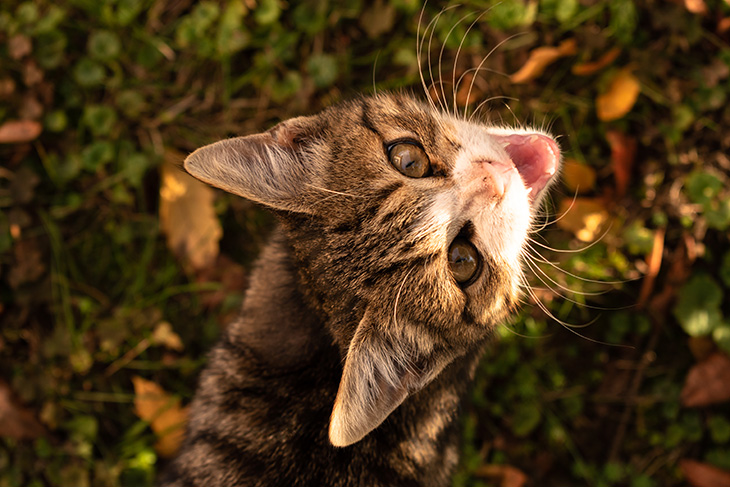Cat Talk
28th Jun 2023
With so many of us spending more time at home over the past couple of years, we have been enjoying lots more time with our pets. How often do you catch yourself having a conversation with your cat? Do you wonder if they understand you? Do they respond to you?
Cats usually ‘talk’ more to their human companions than they do to their feline counterparts, where they are more likely to rely on body language/posture / facial expressions / hissing or grooming etc, to communicate with each other. This means that talking to your cat will encourage it to talk back to you.
Cats cannot fully process and understand words as humans do, much in the same way that we can’t completely grasp their meows. However, both can learn to recognise, respond, and interpret each other. Furthermore, it is known that cats can understand basic commands, in the same way that dogs do. We also learn to tune into our cats and are all too familiar with the sounds they make when it’s feeding time, and we instinctively know what they are saying.
If you talk to your cat often, you may notice that it develops more of a conversational tone when responding.
However, always try to Speak to your cat in a soft and calm voice. Cats are sensitive to tone and tend not to be very forgiving. So, avoid saying negative things when using their name. It is best for your cat to associate their name with happy and calm words.

As long ago as 1895, as cats were becoming more domesticated, there was a scientist called Professor Alphonse Leon Grimaldi, who believed he had translated seventeen different cat sounds into English words. More than a century later, others have backed him up, believing there is a uniform sound to cats expressing either happiness or dissatisfaction.
Your cat may “meow” either as a greeting, a command, an objection, or an announcement. A high-pitched, shorter meow is normally a ‘hello’, while a longer, drawn out mrrrooowww is a demand for something. Pleasant sounding meows are generally used as requests for food or attention, whereas unpleasant meowing is usually reserved for demands or to express annoyance.
Observe your cat as you say its name. If you see a tilt of its head or maybe a twitch of its ears, then you can be sure it recognises its own name. Even when sleeping, cats will often have a physical response to hearing their own name.

Some cat owners claim that when visiting different parts of the country they notice cats miaowing in different “accents”. As strange as this may seem, there may be some truth in this. Lund University in Sweden are coming to the end of a 5-year study that has been looking at the influence of regional accents of humans, on the sounds their cats make. They have been studying and comparing the sounds cats make from two distinct dialect areas in Sweden: Stockholm and Lund. The results have yet to be published, but we look forward to hearing their findings!
To summarise, we can see that it is important to communicate with our cats. This will encourage an audible reply, make them more receptive to us and develop more of a bond with them. But pay attention, the more you watch and listen to your cat, the easier it will be to understand what they are communicating. Here’s to plenty of cat talk from now on!
